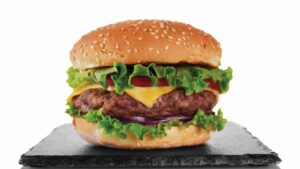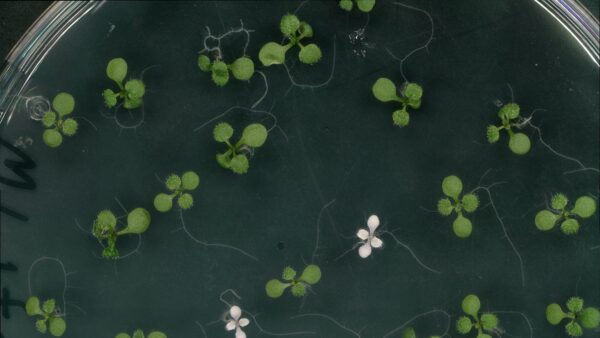To satisfy Europe’s craving for meat, dairy and eggs, the continent is more and more dependent on imported plant protein. Since the 1960s, meat consumption in the EU has increased by 60%, in particular, pig and poultry meat. The animals are largely raised in factory farms and almost wholly reliant on feed composed of cereal and plant proteins such as soy. Such a model comes with several challenges, from water, soil and air pollution to biodiversity loss, just to name a few. Apart from that, a high consumption of animal products also clashes with global health guidelines. Trying to bridge the gap between breeding for plant protein and food is not an easy one. Lots is said about improving the protein content of legume crops such as peas to answer the increasing global demand for plant proteins, but not always with the desired progress. One company that is working solely on this is Israel based Equinom. European Seed spoke with Gil Shalev, CEO of Equinom, to get his take on breeding for plant proteins.
European Seed (ES): Gil, can you tell a bit more about your company?
Gil Shalev (GS): Equinom is a seed-breeding company that focuses on the requirements of the food industry. We are working on breeding various crops that we found relevant for bringing better protein to the world. For years, the industry (especially the breeding industry) put its focus on crops for feed and biodiesel needs, and the human food was neglected. Most of the breeding work for food focuses on wheat, which is a carbohydrate crop with limited value from a nutritional perspective. Equinom came with the vision to breed for the food industry, using its technology, to improve the quality of the food we eat, and to lead the plant protein revolution from the seed inside-out.
[tweetshare tweet=”For years, the industry (especially the breeding industry) put its focus on crops for feed and biodiesel needs, and the human food was neglected.” username=”EuropeanSeed”]
ES: You are focusing on several protein crops, why is that?

GS: We decided to focus on commodity plant proteins and to create a sustainable food supply chain. Thus, the major high-quality plant proteins are accrued in the legumes family and our focus is breeding soybean, cowpea, pea, mung-bean, chickpea and Fava bean as well as sesame that we see today going to the oil industry, but also as a protein source. We are increasingly aware that the market is looking for more plant protein varieties, not only soybean and pea. The legume family holds different types of crops (of varying protein compositions) and each provides a solution for a different industry. Also, we are working globally to provide solutions for different markets who grow legume varieties in their unique locations.
Market volume and growth potential was another parameter in our selection of 6 of the crops – soybean, pea and chickpea have a nice volume and there are many companies involved in growing and processing these crops. Cowpea, mung-bean and fava bean naturally contain an optimum protein composition and high amino acid score. However, their market is not large enough and is also rather fragmented in different locations, but it has the potential to grow in the future.
ES: Regarding these crops, do you have any wishes for further improvements of these crops e.g. higher percentages of certain components?
GS: Non-GMO soybean – a mature product in the market but limited in its varieties and yield performance. We wish to improve the whole bean food applications, such as the natto and tofu markets, dairy alternatives and improve the protein to oil ratio. But our main goal is to create a commercial soy variety which contains 50% protein as a major protein source without any processing requirements.
Pea – we already grow rows of pea with 50% more protein (overall 30% protein instead of 20%) and we wish to be commercial in 2021, giving the seeds to our partner Roquette.
Chickpea – we have seen the protein content as important trait of focus – especially as chickpea isolate seems to be expensive. We are working on various seeds of different protein compositions. This translates into different functionalities. Chickpea protein seems to be the next big thing in the world, especially for milling usage.
Sesame – As sesame becomes more commercial, we wish to provide the market with different values –not only improve the amino score of sesame protein and protein composition but also improve the oil-yield, so sesame could become a great alternative for soybean as oil-source.
Other grains – we are working with the largest seed bank in the world for all the legume varieties and developing different types with different functionalities.
ES: You use non-GMO varieties? Why is that?
GS: Firstly, we are working in the food industry and non-GMO is prepared and available in many markets. Secondly, we are breeding for multi-traits regulated by multi-genes. All the GMO/gene-editing/CRISPR technology is less relevant for these traits. Nature has all the varieties and genes we need; we just need to use a simple crossbreeding technique with our strong proprietary algorithms. If you look at our product profiler application you will see the ratio of the different traits, and you will see that nature already has it all in built.
ES: Of at least one of the crops you use, GM varieties are available (soybean). If allowed, would you prefer to use those?
GS: We are working only on non-GMO soybean, which is mainly assigned for human consumption and feed and there is ample room for improving the composition of these crops. GMO soybean was bred mainly for the feed and biodiesel industry requirements, focusing on disease resistance and yield performance. The protein content has experienced a reduction over the years (in the last 30 years) and we can improve that by increasing the protein content and yield and also grow soya to meet the requirements of different applications. The soybean required for natto application will be different from the soybean used for soymilk. We have developed an application-focused project, breeding soybean varieties for the different industries.
[tweetshare tweet=”GMO soybean was bred mainly for the feed and biodiesel industry requirements, focusing on disease resistance and yield performance.” username=”EuropeanSeed”]
ES: What are your links to the plant breeding and seed sector?
GS: We are working with universities and seed banks to collect some of the rare and exotic lines we have, but also working on licensing commercial lines for the cross breeding. We are a member of the plant breeding programs and industry, but as we have learnt, it seems that we are the only one who focuses is activities on breeding the seeds and grains for human consumption. We developed algorithms and tools that are specific to our needs, because this information does not exist and has not been investigated in the past.
ES: How do you make sure that plant breeders are aware of your needs?
GS: We are a plant breeding company and we have several breeders in the company that run the different programs. We have combined their knowledge, skill and capabilities with our bioinformatic team to create a strong breeding program that is unique to us. We also have food engineering people who focus on the protein development. We are the only seed-breeding company in the world, that offers all these functions in one company.
ES: Among the crops that you are currently not using, are there any crops that with some genetic improvement could satisfy your needs?
GS: There are many other plant-protein crops that we found, that are less relevant for breeding, although could be relevant from a nutritional or functional standpoint. We have to assess not only the potential but also the feasibility of extending current markets or introducing a new one, based on biodiversity potential. We check that the germplasm diversity is not narrow making sure that the variety that exists in nature is not too limited.
ES: What are your thoughts on the plant breeding innovation technologies (such as CRISPR-CAS) that allow plant breeders to develop new varieties faster and more efficient?
GS: We think that every technology has its importance and is relevant in the market as long as it is safe. CRISPR is an important step in the improvement of crops, but it is limited in its capabilities. For our multi-gene regulated crops it is less relevant, but it is great for markets where only yield is relevant. The public acceptance is limited and we, as company that design smart protein grainsfor food, must be sensitive to the client requests.
ES: You have recently developed a new app. Can you tell us a bit more about that?
GS: We have learned that there is a gap between the food industry knowledge about the natural capabilities and the actual values we can bring from nature. Our app, the product profiler provides the food technology access to a world of opportunities. Until now food manufacturers had very little awareness about the diversity that exists in nature. Choice was limited to the specifications they received. We found that nature has a lot more diversity to offer. The app serves as a direct communication channelthat,for the first time, will strategically link a seed breeding company with food companies, creating a unified language for all stakeholders and along the supply chain from farm to fork.For example, to breed for a specific protein composition that provides specific functionality. Such knowledge could lead to a lesser need for processing for example. The system reveals the natural limitation of each trait of interest. It shows that for example, non-GMO soybean could have low phytic acids, high protein and could maintain the oil content. Or that chickpea could have diverse functionalities, from holding water, emulsification or texture creating.
[tweetshare tweet=”The app serves as a direct communication channel that, for the first time, will strategically link a seed breeding company with food companies, creating a unified language for all stakeholders and along the supply chain from farm to fork.” username=”EuropeanSeed”]
ES: Which interesting innovations do you have in the pipeline?
GS: We are working on multi-trait changes of the legumes. Our innovation will be in creating application-based products (seeds) in soybean, pea, sesame and chickpea. We will increase the protein content by more than 50% and we are also working on improving the amino acid score (by locating rare varieties with better amino acids score and cross breed them with commercial varieties). We believe we could reduce the cost of plant-protein also as a viable cost-effective alternative to meat protein with better taste and functionality. We want to make it clear to the market that plant-protein is here to stay, and this is not a trend.












